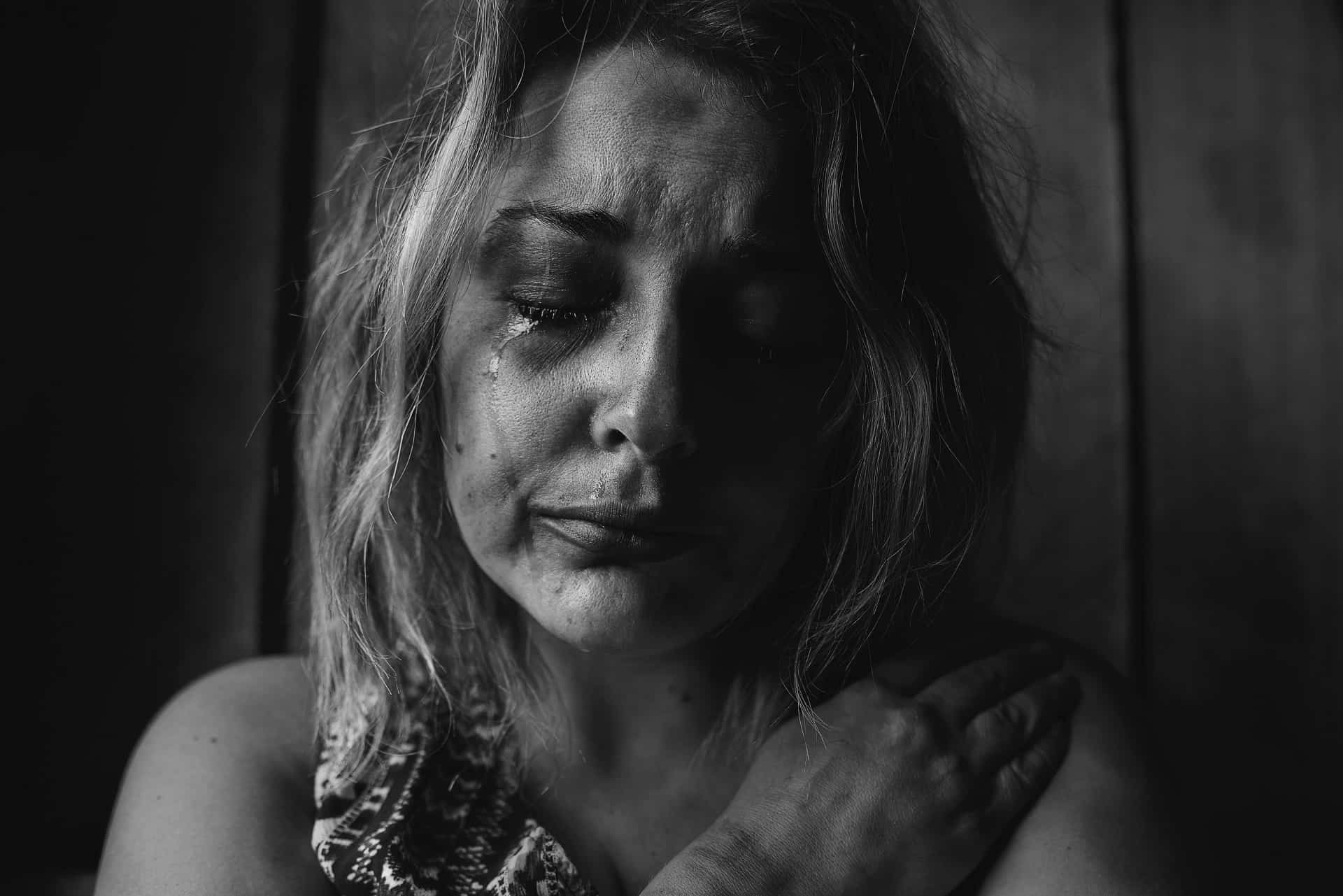Domestic violence, also known as Intimate Partner Violence (IPV) is a major public common. This issue is closely linked with substance abuse, and as many as 40% to 60% of all domestic violence cases involved some type of substance abuse. Those who are under the influence are more likely to engage in risky or impulsive behavior. They are also more likely to act emotionally. Any type of substance can lead to domestic violence. Living with and loving an addict is never easy. Those who are in an intimate relationship with an addict are more likely to be in an abusive relationship. If you are a victim of domestic violence, you need to get help immediately and get out of the relationship now. This article will look at one of the more infamous cases of domestic violence and substance: Johnny Depp’s relationship with Amber Heard. It will also explore what you can do if you are a victim of domestic violence, and how you can protect yourself. 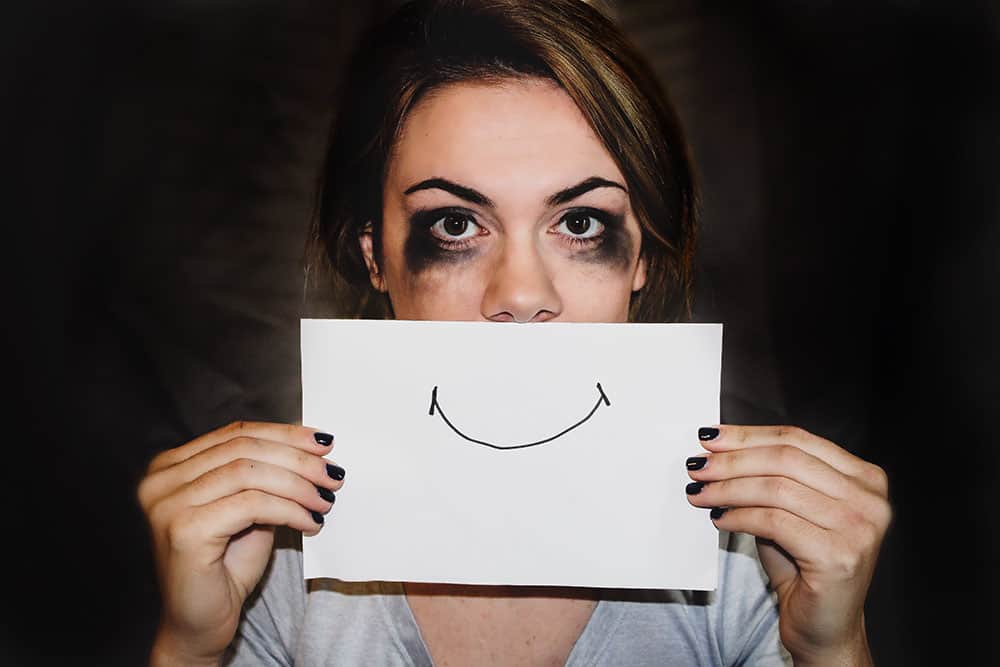
Statistics Involving Domestic Abuse and Substance Abuse
There’s a strong link between domestic abuse and substance abuse. The abusive partner is not the only one who is more likely to use drugs or drink. The victim is equally as likely to drink or use illicit drugs in order to cope with the stress. Alcohol abuse and drug abuse are often used to mask trauma. Let’s take a look at some of the statistics below, so you can get a better idea of (1) the prevalence of domestic abuse in America and (2) the relationship between substance abuse and domestic abuse.
- Physically violent situations are 11 times more likely to happen on days with heavy drug use or alcohol abuse
- More than 20% of male abusers report using drugs or drinking immediately prior to abusing their partners
- 85% of domestic violence victims are female; women are 5 to 8 times more likely than men to be in an abusive relationship
- 40% of men in same-gender relationships report experiencing domestic abuse
- 15.5 million children live in homes where domestic abuse occurs
- 56% of women in abusive relationships are likely to struggle with a mental health disorder; these women are likely to have co-occurring disorders and will need dual diagnosis treatment to recover
From these statistics, it’s obvious that domestic abuse is a huge problem in America. It affects women more than men, and both individuals in an abusive relationship have a higher risk of abusing drugs and alcohol.
“Get your loved one the help they need. Our substance use disorder program accepts many health insurance plans, this is our residential program.”
Domestic Violence Can Happen to Anyone
Many people have a clear picture in their mind of what a battered woman or man looks like. They may also have a clear picture of what an abuser may appear to look like. The truth is that anyone can be a victim and anyone can be an abuser. Even the sweetest petite woman that you see on the streets could be both physically, emotionally, verbally or physically abusing their partner. Recent studies show that domestic violence is a widespread problem across the nation. It can happen to anyone — even celebrities. One of the most infamous domestic violence cases that have captured the attention of the media recently involves Johnny Depp and Amber Heard. That’s right. Our favorite character in The Pirates of the Caribbean has been accused of some very heinous acts. This is the same man who visits children’s hospital in his Jack Sparrow costume just to put a smile on the faces children there. Depp and Heard married in February 2015, but a year later, filed for divorce due to irreconcilable differences. During the divorce, Heard brought to light the abusiveness of the relationship.
Divorce and Restraining Order: The First Glimpse of Possible Domestic Abuse
“I live in fear that Johnny will return to (our house) unannounced to terrorize me, physically and emotionally.” ~ Heard Heard first filed a restraining order against Depp in 2016. This was after she had filed for divorce. This was the first glimpse that the public had of their turbulent relationship. Heard arrived at court in Los Angeles with her lawyer and photos showing various bruises that she claimed Depp inflicted on her during their marriage. She also showed up to court with a bruise. 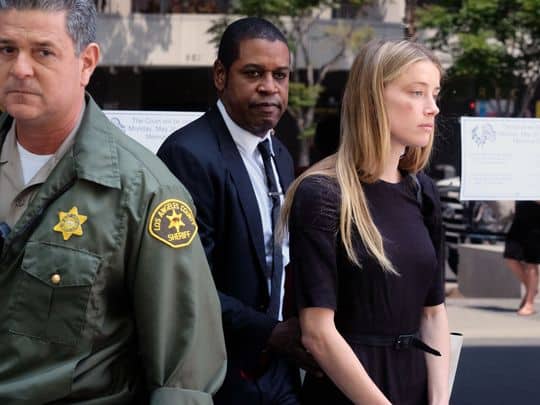 Heard said in a sworn declaration that Depp had thrown her cellphone at her during a fight. This cellphone struck both her cheek and eye. She also claimed that Depp screamed at her and repeatedly hit her. Heard claimed that the actor was both high and drunk during the time of the abuse. While the judge granted Heard with a temporary restraining order, the Los Angeles Police Department could not confirm whether any domestic violence occurred. Law enforcement officers did indeed visit the couple’s downtown LA home on Saturday; however, they claimed that the person who reported the crime did not insist on a police report or offer any evidence for a report to be made. “Officers determined a crime did not occur. They cleared the scene and left a business card. LAPD cannot confirm reports that a restraining order was sought or obtained.” Heard also claimed that this was not the first time that Depp was abusive towards her. She claimed that the actor was both verbally and physically abusive towards her during their entire relationship. She claimed that she often lived in fear and uncertainty.
Heard said in a sworn declaration that Depp had thrown her cellphone at her during a fight. This cellphone struck both her cheek and eye. She also claimed that Depp screamed at her and repeatedly hit her. Heard claimed that the actor was both high and drunk during the time of the abuse. While the judge granted Heard with a temporary restraining order, the Los Angeles Police Department could not confirm whether any domestic violence occurred. Law enforcement officers did indeed visit the couple’s downtown LA home on Saturday; however, they claimed that the person who reported the crime did not insist on a police report or offer any evidence for a report to be made. “Officers determined a crime did not occur. They cleared the scene and left a business card. LAPD cannot confirm reports that a restraining order was sought or obtained.” Heard also claimed that this was not the first time that Depp was abusive towards her. She claimed that the actor was both verbally and physically abusive towards her during their entire relationship. She claimed that she often lived in fear and uncertainty.
Amber Heard Penns an Op-Ed in Washington Post
Shortly after speaking out about her relationship, Heard penned an op-ed in Washington Post talking about domestic violence. The post included no names, but detailed Heard’s experience with domestic abuse and her call to action for those who are abused. “I want to ensure that women who come forward to talk about violence receive more support. We are electing representatives who know how deeply we care about these issues. We can work together to demand changes to laws and rules and social norms — and to right the imbalances that have shaped our lives.” Heard claims that domestic abuse victims are often hesitant to go public because they are painted in a negative light. She claimed that she felt the full wrath of coming out as a victim, as she was dropped from some of her modeling campaigns. Her career in acting was also at risk. Many people told her that she would no longer get any big roles, if any roles at all. Her experience gave her insight into how the institution protected the abusive partner. It examined the social plight that victims and survivors often face. Her goal was to help raise awareness for domestic violence and make a change to laws, rules and social norms in order to protect the victims. 
Johnny Depp Strikes Back with a Defamation Lawsuit
Heard’s claims shocked the public. Shortly after, Depp filed a defamation case for $50 million. While Heard’s op-ed did not specifically name any names, Depp’s lawsuit claims that it is clear that Heard was talking about him. He claims that the domestic abuse allegations had significantly damaged his career and that he had suffered massive financial losses because of the accusations. For one, he was dropped from his role as Captain Jack Sparrow in the Pirates of the Caribbean films. Depp denies being abusive and claims that Heard made up the allegations in order to put herself in a more positive light during the divorce. She had asked for alimony and a $7 million settlement, which she promptly donated to campaigns that help victims of domestic abuse.
“We treat both addiction and co-occurring disorders and accept many health insurance plans. Take a look at our inpatient program.”
Heard Offers More Proof
Recently, Heard asked a judge to dismiss Depp’s defamation lawsuit by offering more evidence of the physical and verbal abuse that she suffered during their two-year marriage. Heard claimed that Depp began abusing drugs and alcohol about a year into the start of their relationship in 2012. She claimed that the substances transformed him into a different person and a “monster”. She claimed that Depp would often go on binges, like a three-day ecstasy binge. She also claimed that Depp would also take other illicit drugs. At which point, he would physically assault her by punching her, throwing bottles at her or grabbing her hair. Here are some of the photos that she submitted to back up her claims: 


The Link Between Alcohol Abuse and Domestic Violence
It’s clear that from many domestic violence cases that alcohol abuse is often an instigating factor. Those who drank heavily often became abusive. But, is there actually a clear link between alcohol abuse and violence? Not surprisingly, the answer is yes. A Scandinavian study found that intoxication led to a rise in violent behavior. The violence usually came from individuals who would often suppress their feelings of anger while they were sober. The alcohol freed these individuals of any inhibitions and allowed them to act out. Additionally, those who did not work on their anger were more likely to abuse alcohol. Those who entered alcohol rehab programs and got their drinking under control would also be less likely to be abusive. Alcohol rehab programs also offer counseling services that can help these individuals work through their emotions.
The Link Between Drug Abuse and Domestic Violence
Many people who are admitted into drug rehab programs by loved ones claim that they were often abusive. Studies found that those who abused hallucinogens and stimulants were likely to get abusive if they also did not get their anger checked out when they were sober. Those who abused stimulants like cocaine would experience a rush of energy and emotions. This flood of neurochemicals could heighten one’s emotions and cause them to act more emotionally rather than logically. While it’s important to get one’s emotions and thoughts under control, overcoming addiction is also a start in putting an end to domestic violence. 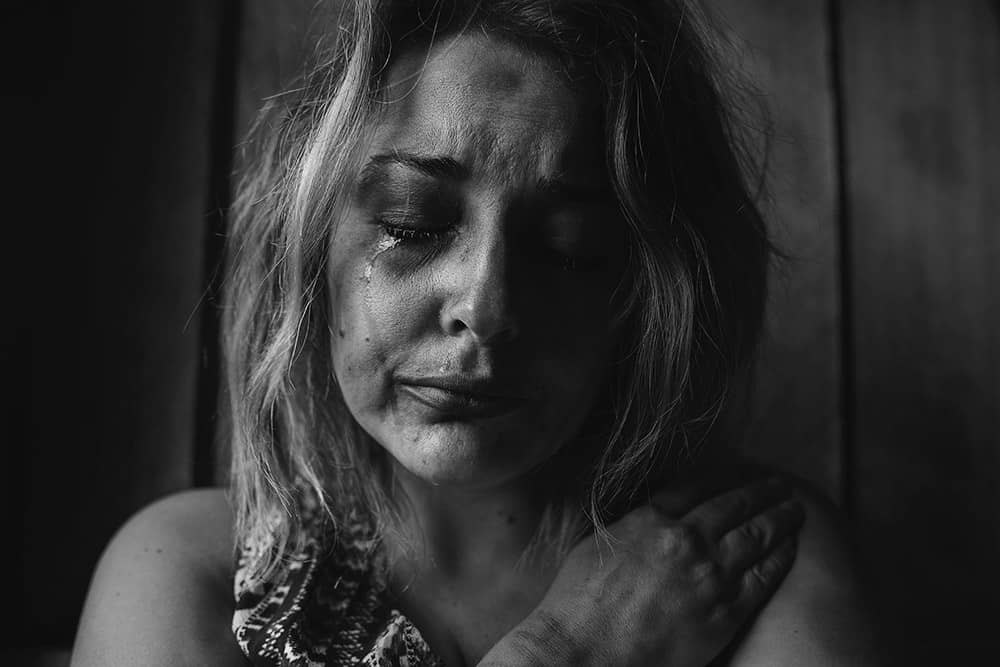
The Different Types of Abuse
When we picture IPV, we often picture physical abuse. We picture a partner punching the other in the face. Domestic violence and abuse are a lot more than just physical assault. We’ll explore the different types of abuse below.
Physical Abuse
This is the most common type of domestic abuse. It’s also the most obvious type of abuse. It’s hard to ignore a black eye or an injury. Physical abuse happens when one partner intentionally hurts or injure the other partner. Common examples of physical abuse include:
- Abandoning the victim in an unfamiliar place
- Driving recklessly or dangerously when the victim is in the car in order to scare or hurt him or her
- Forbidding one’s partner from eating or sleeping
- Preventing one’s partner from getting medical help or attention
- Pulling a partner’s hair
- Punching slapping, kicking, biting or choking the partner
Emotional Abuse
Emotional abuse can be just as taxing and harmful as physical abuse. Those who have experienced emotional abuse may have low self-esteem and may have difficulties believing in themselves. Emotional abuse uses emotions to hurt the other person. Common examples of emotional abuse include:
- Telling a partner that they will never find anyone better and that they are lucky to be in the relationship
- Damaging property when angry, like punching walls and throwing things
- Humiliating the victim
- Threatening one’s partner
- Trying to isolate one’s partner from friends and family
- Constantly criticizing a partner and manipulating him or her to believe that he or she is in the wrong or deserve the backlash
Verbal Abuse
Verbal abuse is often interchangeably as emotional abuse, but there are actually some distinct differences between the two. Verbal abusers use language to hurt someone. This could include speaking violently or aggressively or not saying a thing at all. Common examples of verbal abuse include:
- Ignoring a partner and giving them the silent treatment
- Calling a partner names or degrading them
- Using aggressive forms of language to hurt one’s partner
Financial Abuse
Financial abuse can be just as bad as physical abuse. It can make one’s partner feel as if he or she has no control over anything in his or her life. Financial abuse can come in different forms. Some common examples of financial abuse include:
- Monitoring the amount of money that a partner spends and preventing him or her from making any purchases
- Placing a partner’s paycheck into one’s bank account and denying him or her access to it
- Preventing a partner from having access to or viewing bank accounts
- Forbidding a partner from working or limiting the hours that they can work
- Refusing to give a partner money to pay for basic necessities, like food, medicine or transportation
- Stealing money (like using it to buy drugs or alcohol)
Alcohol and drug addiction treatment can be rather costly. However, even those who are in financially abusive relationships can seek drug or alcohol treatment if they need it. Thanks to the Affordable Care Act, all health insurance plans cover substance use disorder treatment. Verify your insurance with us today to get a better idea of the type of coverage that you have.
Sexual Abuse
Sexual abuse happens when one partner receives undesired sexual behavior or attention from the other. Sexual abuse is more common than you’d think. Every minute, 24 Americans are victims of rape, physical violence or stalking by an intimate partner. Women are more likely to be victims than men. Common examples of sexual abuse include:
- Forcing a partner to dress in a sexual way
- Forcing or manipulating a partner into having sex or into performing sexual acts
- Demanding sex
- Forcing a partner to watch pornography
- Involving other people in sexual activities against one partner’s wishes
Sexual abuse can also include sexual coercion. This includes pressuring a partner into sex even after they have refused or making him or her believe that they owe sex because he or she is in a relationship.
Reproductive Coercion
Many people also mistake reproductive coercion for sexual abuse. Reproductive coercion, however, is a partner’s need to have power and control over the other partner’s reproductive system. Sometimes, sexual abuse and reproductive coercion overlap. Common examples of reproductive coercion include:
- Removing or breaking a condom intentionally during intercourse
- Refusing to use a condom or other types of birth control
- Lying about one’s birth control method (being on the pill, having a vasectomy, etc.)
- Forcing pregnancy on a partner and not supporting his or her decision
- Forcing a partner to get an abortion or preventing her from getting one
“We accept many health insurance plans. Get your life back in order, take a look at our residential program.”
Why Do Victims of Domestic Violence Stay in Abusive Relationships?
It’s always easy for someone outside of the relationship to see how abusive and damaging a relationship may be. For the victim, however, it’s not as easy. When you’re in love and look at someone through rose-colored glasses, all the red flags just look like flags. Some victims are in denial about the nature of their relationship. It’s difficult to come to terms with the fact that someone you love may not be a good choice for you. Love is not the only reason why many victims hesitate to leave an abusive relationship. Many victims of domestic violence will also hesitate to leave because:
- They’re afraid. Many domestic violence victims are scared for their lives. Leaving is a very dangerous thing, as up to 75% of abused women are killed after they leave their partners.
- They believe that the abuse is normal. Recent studies show that approximately 10% of women in America think that spousal abuse is sometimes justified. Many women and men who are in abusive relationships do not realize that their situation is not okay.
- They do not have the means to financially support themselves. The abusive partners may financially abuse their partners by limiting their resources. This may prevent victims from leaving, as they do not know where to turn to.
- Their religion prevents them from getting a divorce. Many partners will not want to leave an abusive relationship because of their faith and religious beliefs. Their faith may encourage them to ‘stick it through’ the relationship.
- They believe that the abuse is their fault. Many victims have low self-esteem. Their partner constantly belittles them, and sooner or later, they believe it.
Making the decision to leave is not an easy one. Many victims will struggle to leave for quite some time before taking any action. 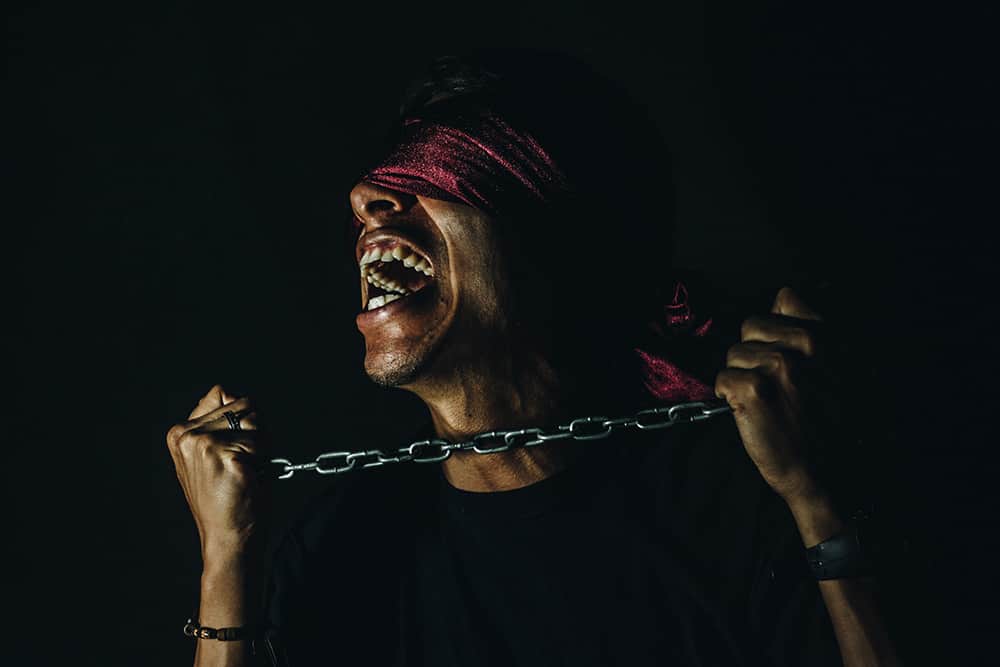
How to Get Out of an Abusive Relationship
If you feel that you’re in an abusive relationship, you need to come up with a solid escape plan. Get out of the relationship before it gets worse. It’s not up to you to change your partner or help him or her see the light of day. First and foremost, you must learn to identify your abuser’s red flags. These are signs that trouble is brewing and that you need to find an excuse to leave the house. Identify safe areas in your house where you can go if you see a storm brewing. Avoid small and enclosed spaces, like bathrooms, or rooms with weapons, like the kitchen. Look for a place that has a phone and an outside door or window. Consider looking for safe houses, women’s shelters and other legal resources out there. Be ready to leave at a moment’s notice and come up with a code word that you can use to let your friends, neighbor or family know that you are in danger and that they need to call the police. If you are already thinking of leaving an abusive relationship, practice escaping quickly and safely. Rehearse your escape plan frequently, so you know exactly what you can do in the event of an attack.
Protection for the Future
Just because you’ve left, it doesn’t necessarily mean that you’re safe. You should take just as many precautions to protect your future self. After you’ve relocated to a new home, you should also consider:
- Switching your children to different schools
- Getting an unlisted phone number to prevent harassment
- Using a post office box rather than your home address
- Cancelling old bank accounts, credit cards, etc.
- Changing up your routine, like taking a new route to work or finding new places to go grocery shopping
- Getting a restraining order or protective order against the abusive partner
Try to avoid your abuser. He or she may try to contact you or approach you. Don’t become a victim by believing the abuser again. It’s time to put you and your children first!
Other Resources for Victims of Domestic Abuse
With domestic abuse becoming such a huge issue, it’s no surprise that there are actually many resources out there for victims of domestic violence. If you’re looking for a way out or for some help, take a look at some of the organizations below.
National Domestic Violence Hotline
One of the first places that you should look for help is the National Domestic Violence Hotline. This hotline offers support to domestic violence victims at all hours of the day. If you call, you can receive referral services in over 170 languages and also crisis intervention information. This organization’s mission is to give power back to the victims. You can also get help without saying a word by using the online chat system, which is available 24/7.
The National Coalition Against Domestic Violence (NCADC)
The National Coalition Against Domestic Violence (NCADC) seeks to make macro-level changes in legislation and policies related to domestic violence. NCADV collaborates with many other national organizations that serve and protect survivors of domestic violence. It is also dedicated to holding offenders accountable for their actions. This organization supports a variety of programs like:
- The Cosmetic and Reconstructive Surgery Program (CRS)™. This program is partnered up with the American Academy of Facial Plastic and Reconstructive Surgery (AAFPRS). Its aim is to help survivors of domestic violence who do not have the financial means to receive cosmetic and reconstructive surgery needed to repair injuries caused by an abusive partner.
- The National Domestic Violence Conference. This conference offers survivors and advocates an opportunity to learn more about the field. Each year, over 500 people attend this conference.
- Advocacy Webinars. NCADV’s monthly webinars offer more insight into the latest research on domestic violence. These webinars are mostly educational and can help advocates improve their skills.
- Take A Stand FOR Healthy Relationships. This program teaches students how to build healthy relationships. It aims to prevent future domestic violence.
- Disarm Domestic Violence. This initiative was started by the NCADV, the Educational Fund to Stop Gun Violence, the Alliance for Gun Responsibility Foundation and the Prosecutors Against Gun Violence. This initiative will work with law enforcement officers, prosecutors, survivors, victims, and gun violence prevention activists to remove guns from armed abusers.
NCADV works intimately with many other programs and organizations. They work tirelessly to help domestic violence survivors and victims.
Battered Women’s Justice Project
Since 1994, the Battered Women’s Justice Project (BWJP) provides technical training and assistance to professionals who work with battered women. This organization manages both the National Center on Protection Orders and Full Faith and Credit and the National Clearinghouse for the Defense of Battered Women. It also offers a wide variety of services, like education programs and outreach programs that can help IPV victims.
Loveisrespect
Loveisrespect is a 24-hour helpline that aims to help teens in abusive relationships. This initiative was launched in February 2007, and is one of the largest domestic violence hotlines out there. Teenagers are not strangers to both domestic violence and substance abuse. In fact, a rising number of teenagers are abusing drugs and alcohol. Anyone who calls into Loveisrespect will be able to speak with highly-trained advocates. They can receive a plethora of information, resources, and support that can put an end to teen violence. This organization also offers online chat and texting services.
Safe Horizon
Another one of the largest victim services non-profit organizations in America is Safe Horizon. Each year, this organization provides social services for over 250,000 abuse victims. This organization offers a large array of services from a hotline for support to domestic violence shelters, which are a safe place for victims to rebuild their lives. Safe Horizon also offers counseling services, legal and court programs, community programs and more.
Break the Cycle
Breaking the cycle of abuse is important. Many children who have witnessed domestic violence are more prone to be violent themselves or to get into abusive relationships. Founded in 1996, Break the Cycle is an organization that offers support to youths between the ages of 12 and 24. This organization has launched numerous projects that teach youths how to build healthy relationships regardless of their sexual orientation, ethnicity, age or gender. It offers support programs all across the nation.
Find Clarity or Help for a Loved One at Northpoint Washington
Do you suspect that you may have the traits of an abusive partner because of your drug use or alcohol use? Or, are you in an abusive relationship and are looking to get help or get out? Here, at Northpoint Washington, we can help you find a solution to your problems. If substance abuse factors in the quality of your relationship, we can help you or your partner overcome a substance use disorder (SUD) and get sober. Our behavioral therapies and counseling sessions help our clients work through their inner issues and better understand their emotions. We offer both a 28-day drug detox and rehab program and a 28-day alcohol detox and rehab program. Our state-of-the-art facility offers a comfortable environment for recovery, and we use evidence-based treatment approaches. We also provide family therapy and support, which can mend strained and broken relationships. Do you have any insight into domestic violence and drug or alcohol misuse? Leave us a comment below to chime in on this conversation. We’d love to hear from you. Image Sources: Amber Heard https://www.gannett-cdn.com/-mm-/00848800b751651f133931bd953af147e86ebc69/c=80-0-2921-2136/local/-/media/2016/05/27/USATODAY/USATODAY/635999618707234122-AP-APTOPIX-Johnny-Depp-Divorce-001.jpg?width=540&height=405&fit=crop https://www.telegraph.co.uk/content/dam/news/2019/04/12/TELEMMGLPICT000194062676_trans_NvBQzQNjv4BqzCbPVAt3Cy0MGTexK4YAH7hTAElNCZlnqcqpupVkV-w.jpeg?imwidth=124 https://www.telegraph.co.uk/content/dam/news/2019/04/12/TELEMMGLPICT000194065023_trans_NvBQzQNjv4BqnyUBKpp2gY0C65_8TFKG03FZzq8EDstvg46015CdOxg.jpeg?imwidth=1240 https://www.telegraph.co.uk/content/dam/news/2019/04/12/TELEMMGLPICT000194065144_trans_NvBQzQNjv4Bqp-DRdt81JTDmzsanP97NJQBdYyIOHOiV-T0q_dYvGDI.jpeg?imwidth=1240 Johnny Depp https://www.flickr.com/photos/celebrityabc/21738979726

